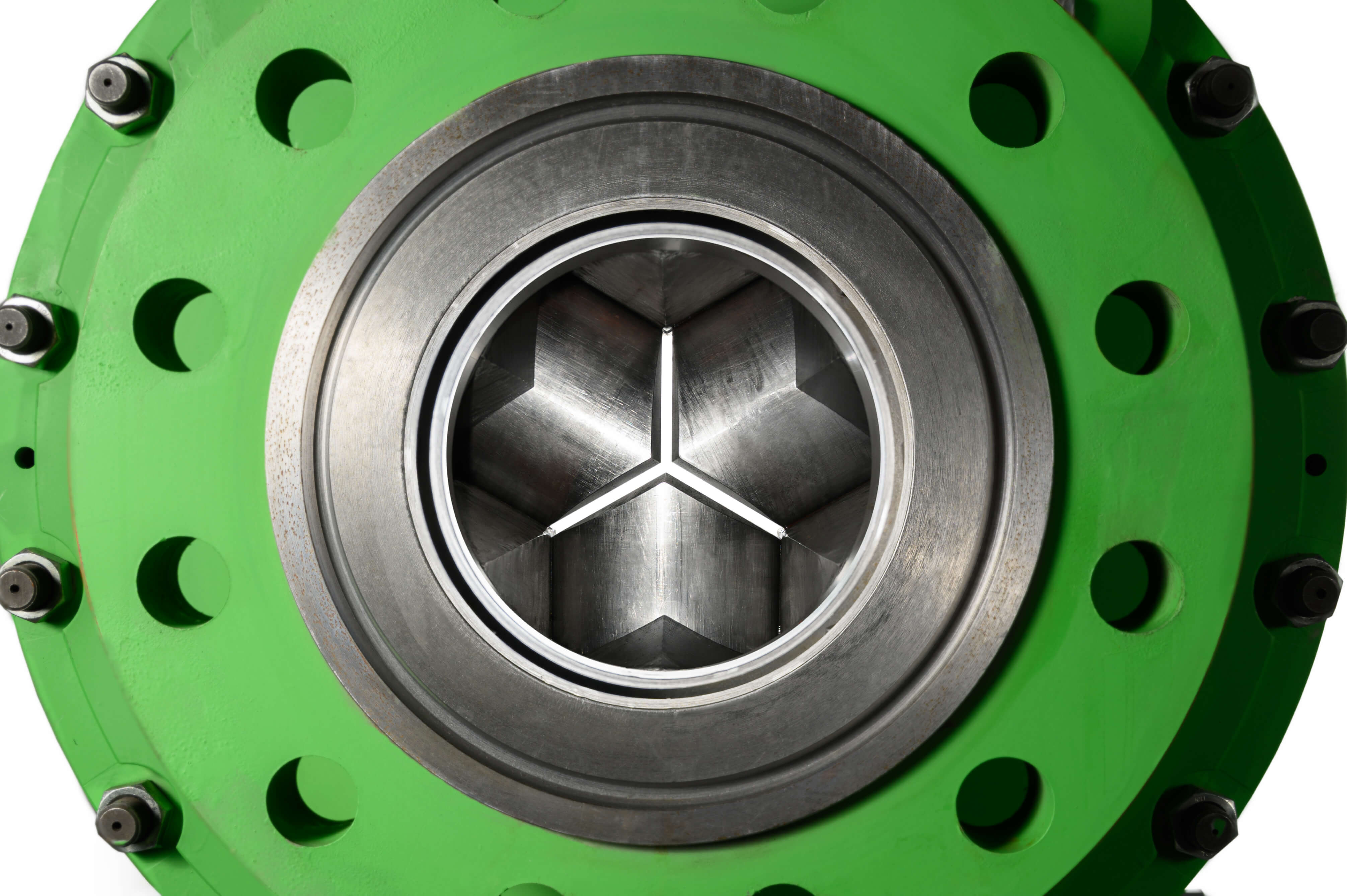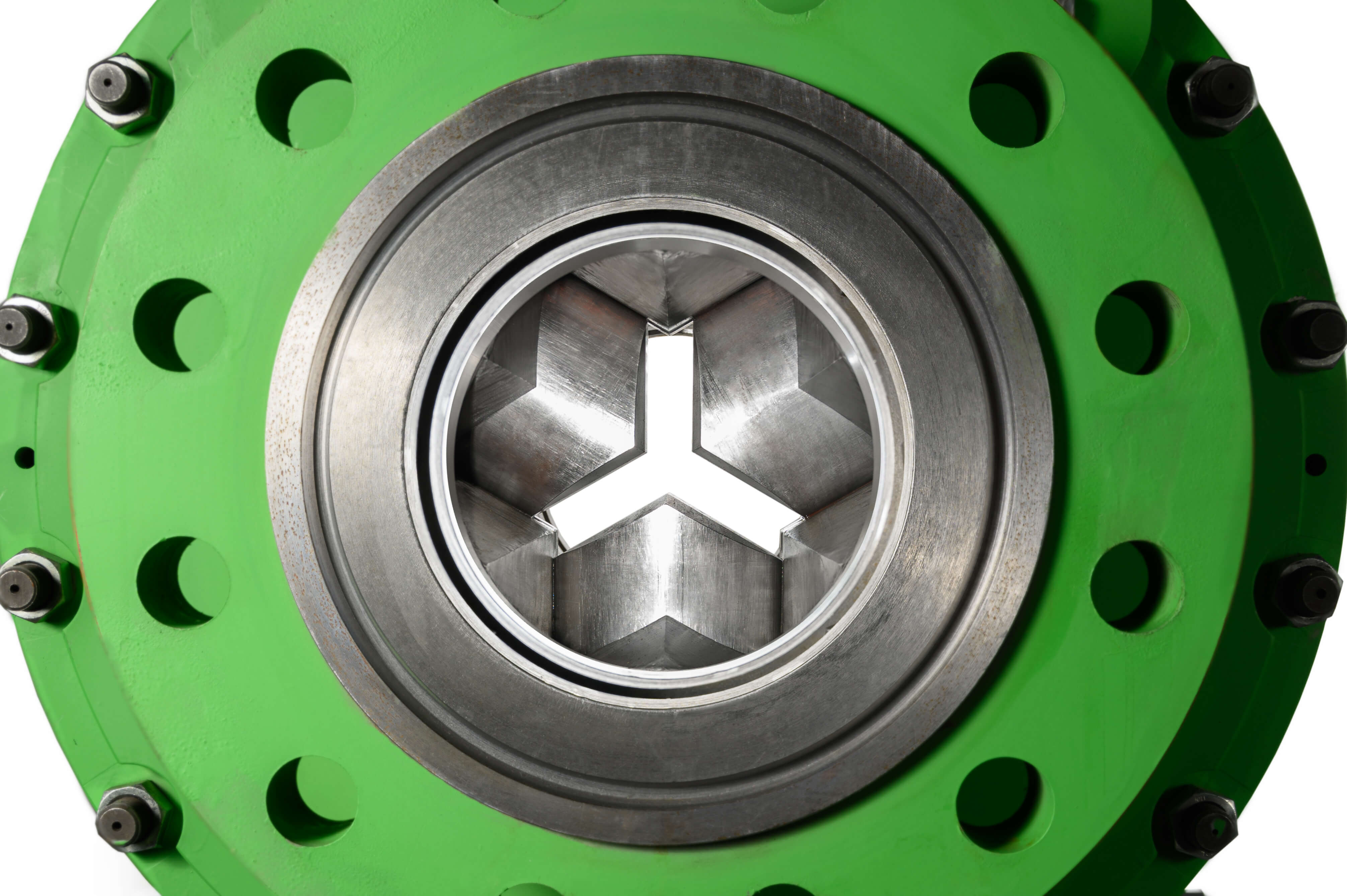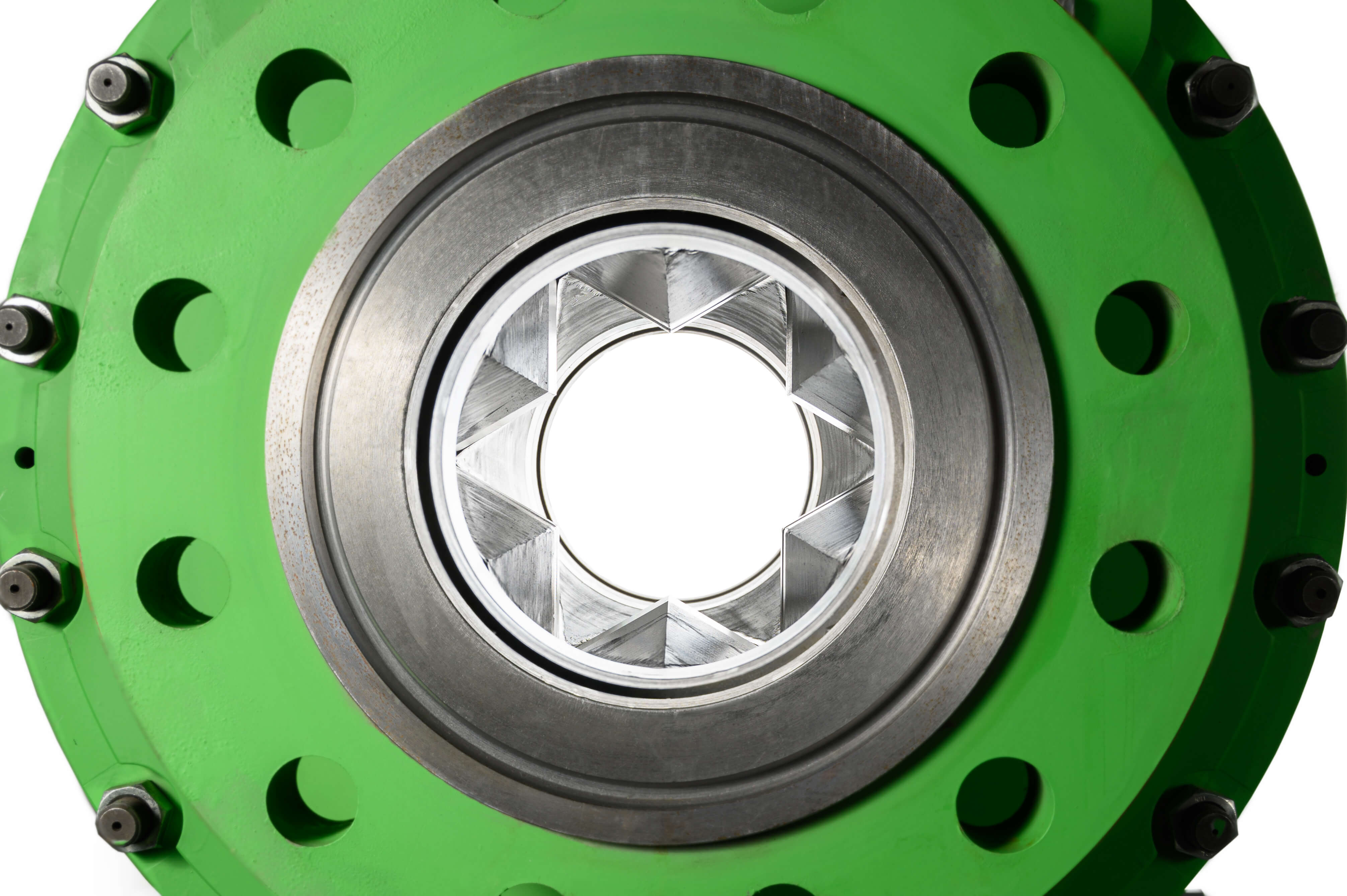Regulation principle
The essence of flow regulation, in particular of a gaseous medium, is in the geometric limitation of the flow characteristics of a specific section of the pipeline. The greater the range from full closure to the maximum possible opening of the regulator passage, the higher the characteristics of a given section.
The existing control systems set the skipping capability from: no more than 20% for saddle regulators; maximum 38% for plunger regulators; and 70% for ball regulators.
The characteristics are key for regulation. At the same time, the nature of the flow itself is not taken into account. This is especially important for gaseous media. For example, the use of ball regulators is limited precisely because of the instability of the outgoing 'pattern' of the pumped medium.



Using the method of regulation due to symmetrical narrowing of the flow section to the center, we solved all the above-mentioned issues. The throughput characteristic is up to 99% of the pipeline's capabilities; absolute axisymmetricity of the flow in the entire range of regulation; absence of any change in the direction of movement. We were the first to implement the principle of a 'smooth pipe' in the flow regulator. Hence, a short-term reduction in costs for compensation of losses during regulation. A significantly more optimal, economical and predictable regulation system.
It can also be noted that the method of moving the throttle elements allows for very precise positioning using extremely simple methods.
The second essential characteristic of any equipment is its durability and maintainability.
Unfortunately, we do not have a long history of operation, but we have the entire possible list of tests, trials, inspections and trial operation. Based on this, we can absolutely confidently assert that under any conditions corresponding to the most stringent operating requirements, the regulator of this design does not even have an initial wear and tear in accordance with GOST. Equipment defect detection showed significant stability of all design elements after pumping 560 million m³ of gas for 1 year under real operating conditions.